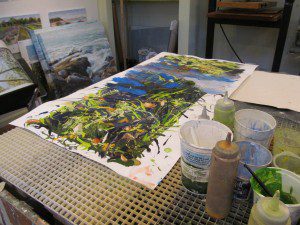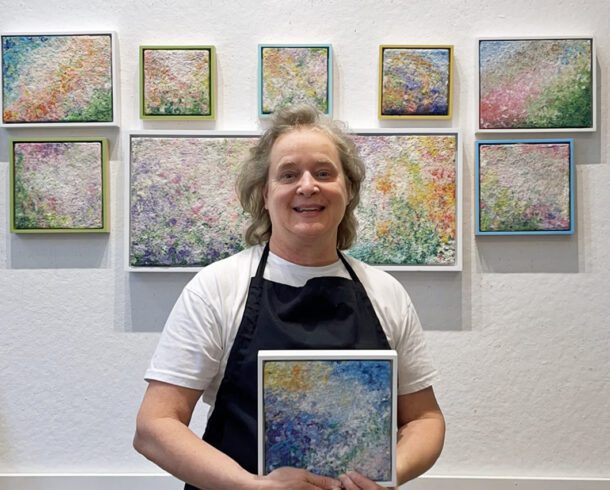This photograph shows the painting immediately after over-beaten pulp has been added. The pulp is still wet, thus the shinny reflection on the surface. I add several colors at once, unblended, for the characteristics of each color to shine through. The trick to working from nature is to let the subject breath through the work. Never try to direct the painting too much. Allow the work to have a voice of its own as it moves toward the completed state. This can be tricky for the novice who wants to test the boundaries of their talent. But, leaving a work slightly unfinished and raw encourages the viewer to participate more in the painting and gives them an idea of how the creative process works as they attempt to extrapolate from the finished product.
Follow Us
Recent Posts
- A History Of Stained Glass — Chasing The Light In Times Of Darkness
- Images of the Flag in American Art, Wednesday, June 11, 7:00 PM, 10 Elm Street, Boxford, MA
- A History of Stained Glass: chasing the light in times of darkness
- Summer’s End: A painting of dahlias in memory of my mother.
- A history of Stained Glass: chasing the Light through times of Darkness


